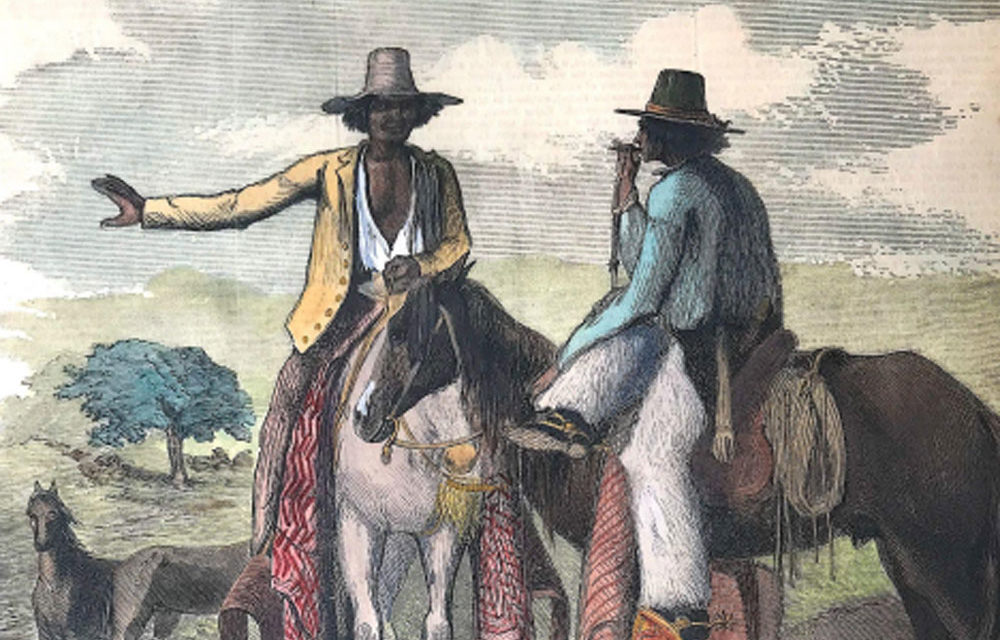In 1598, Miguel Sánchez Sáenz, my 7th great grandfather on my mother’s side, sailed from the La Rioja region of Spain to the Americas as an indentured servant. Sáenz hailed from the town of Anguiano a short distance from Pamplona, a city famed for its encierro (running of the bulls) during the annual Fiestas de San Fermín.
By the end of the 1500s, it had become difficult to emigrate from Spain to its colonies in the Americas. Scholars note that by 1560, the colonies had such a large population of unskilled young men that they were discouraged from immigrating. If Sáenz wished to immigrate to the Americas, there was a singular way–to join his employer, Pedro Redondo de Villegas.
Villegas’ commercial assignment in Havana, Cuba was tied to the military, and he likely viewed his emigration as permanent given that he had left Spain with his family and servant. Spanish records listed Villegas’ trade as “Contador de Fábrica de Artillería”, an accountant for a munitions plant in Havana.
In the Catálogo de Pasajeros a Indias (1586-1599), known as the ‘passenger lists,’ Sáenz, a young teenager at the time, is listed as a ‘criado’ or servant to Villegas. The records show that Sáenz was a native of Anguiano in the Province of La Rioja-Castilla La
Vieja, and he was passenger No. 4,898.
Much changed for the Spanish colonies after Villegas and Sáenz landed in Cuba. Passengers were on constant
alert, fearing attacks from pirate ships or “corsairs” sailing with French, English, and Dutch sailors. Following an attack on the port city of Santiago, Cuba in 1586, the Spanish Crown decided that the colonies had to fortify and defend themselves, thus the need for more soldiers and artillery experts.
Sáenz arrived in Havana at age 18, and in addition to his daily duties as criado, he received training in the use of firearms. In 1601, as Sáenz completed his servitude, Spain began allowing the importation of 600 enslaved Africans per year to Española, Puerto Rico, and Cuba. Sáenz was not in Havana long enough to witness the creation of large sugarcane plantations in which enslaved people were forced to work. After fulfilling his servitude, Sáenz set sail for the port of Vera Cruz in Nueva España, as México was then known. He was 20 years old.
My source of information about Sáenz and his employer Villegas is the excellent research report by Joel René Escobar y Sáenz, Family History of Capt. Miguel Sánchez Sáenz and his Descendants published in 2002 in San Antonio. I also used various other historical sources to place life in Cuba into perspective. It was helpful that Escobar, a descendant of Sáenz, also documented his
ancestor’s later migration from Cuba to Monterrey, the capital of Nuevo León, c. 1600.
Escobar wrote that when Sáenz migrated to Nuevo León, New Spain’s northern frontier, sometime between 1600 and 1610, he had already enlisted in the military. Sáenz met and married Ana de Treviño, daughter of Capt. José de Treviño and Leonor de Ayala. My research shows that José de Treviño arrived in Monterrey in 1603. Texas historian Armando C. Alonso (Tejano Legacy) notes that Capt. Treviño introduced, “large numbers of cattle, sheep, and horses,” as well as farming equipment and stones for a flour mill in Monterrey.
Sáenz arrived in Monterrey at a time when the Royal Crown encouraged the development of México’s northern regions. In order to construct and manage ranches and mines, the colonizers required military protection, as well as locally grown food. Members of the military, especially officers, enjoyed a higher social status than ordinary citizens.
By the time he immigrated to Mexico from Cuba, Miguel Sanchez Sáenz had attained the rank of captain, and his subsequent marriage to one of the leading ranching families in Nuevo León established him as a prominent rancher. He earned the confidence of his community, which elected him alcalde ordinario, a judicial and administrative office, in 1625. Sáenz, once an indentured servant too poor to afford his own passage to America, eventually became mayor in a major province of Nueva España.
Sáenz’s story is one of an adventurous young immigrant to the New World whose fortunes were not based on discovering gold or silver. His hard work, positive relationships with mentors and Mexican citizens, as well as service to his country provided a route for upward mobility and an opportunity to contribute to his adopted Mexican community.
Coming to America in 1598: A Latino Story









